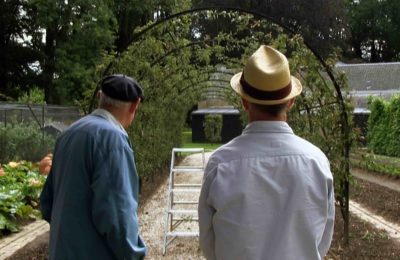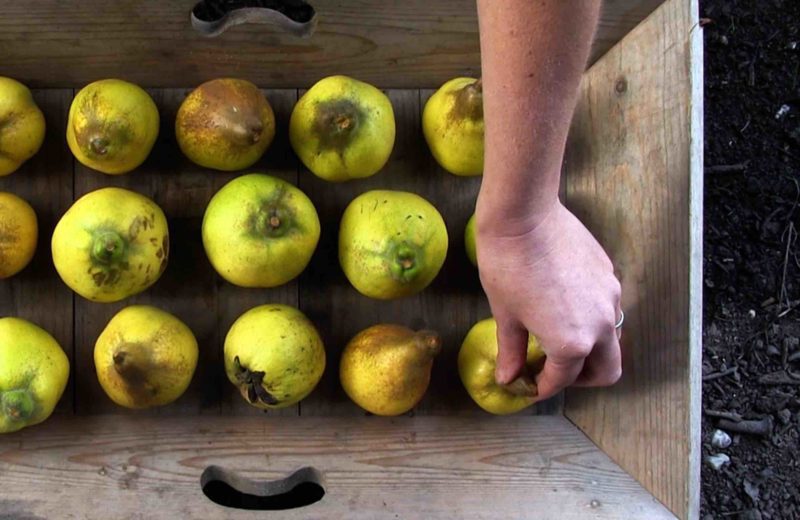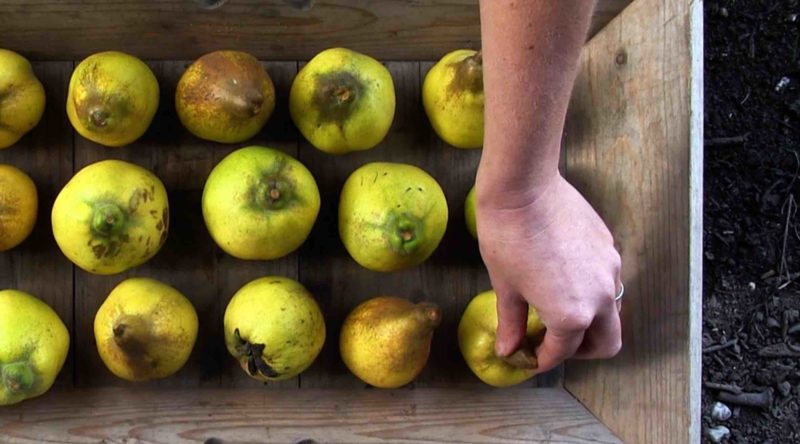INTERVIEW: ‘Portrait of a Garden’ follows two gardeners over the course of 12 months

Portrait of a Garden, the new documentary from director Rosie Stapel, follows two gentlemen in the Netherlands as they maintain and beautify the oldest “kitchen garden” in their country. They painstakingly care for their fruit, vegetable and herb plants with such delicacy, expertise and love that the film can be inspiring, even when pear trees and Swiss chard are the subjects being discussed.
Stapel, a first-time filmmaker, spent a lot of time with 85-year-old Jan Freriks and the estate’s owner, Daan van der Have. Her two characters converse so easily and smartly about gardening and pruning that it’s like watching a textbook on agriculture and horticulture come to life. They finish each other’s sentences, respect each other’s knowledge and never spark conflict in their daily outings among the greens. Theirs is a life of dedication, hard work and earthly serenity.
“It’s a bit special the way it started because Daan, one of the main characters, he wanted to do something about the garden,” Stapel said recently on a phone interview from Paris. “He felt he had to do something with it, and he asked me to think about it. And together with a friend, we had the idea to make a film. I didn’t have much experience making films.”
Stapel started filming in the winter months and sought to find a story among the two gardeners’ pruning actions. By the end of the first day, she realized the connection and camaraderie between the two gentlemen would become the focus of Portrait of a Garden.
“I saw the men can explain me this garden because they’re actually also the garden,” she said. “I mean, the garden would not be there without them. I filmed the two characters the first day I remember, and I saw it by myself. I said, ‘Jeez, actually the story is probably between them.’ That’s what I felt, so I threw away the scenario. I said to myself, ‘OK, let’s try and see what happens when I come back and film, and come back and film.’ And, yeah, finally it became the film it is now, so just by filming there and having no ideas about the garden actually, I learned a lot of things about the garden. But also [these] two men were my obsession in a way because I thought, OK, they are actually the persons who are actually telling me everything about the garden.”
Stapel follows the life of the garden and the gardeners over the course of 12 months, January through December. There is anticipation in the air when the warmer spring and summer seasons arrive with the promise of new buds and a high yield. There are challenges with beetles, bees, mildew and the need for organic pesticides. The 12-month structure makes Portrait of a Garden somewhat operatic with discernible acts, expected triumphs, crushing setbacks.
“[It’s] very natural to do it that way actually,” she said. “I started shooting in the winter, and I ended also in the winter. In this year, I developed myself in my camerawork because in the beginning I was like running and stressing. I said, ‘OK, how am I going to shoot this?'”

The documentary also stands as a testimony for a practice that is dying off in the world. This is not industrial, chemical-rich farming focused on profits. These are two men with pairs of pruners and a knowledge of how these plants live and breathe. They are truly one with the nature they respect, and Jan understands that this art (and science) are becoming lost. He needs to pass along his wisdom before it’s too late.
“We put ourselves above nature, and, in fact, we are nature ourselves,” Stapel said. “That’s what I realized when I was in the garden filming.”
The director didn’t want to make a doom-and-gloom documentary about the destruction of humans on the environment. Instead, she was focused on showing what can happen when two humans commune with nature, respecting it and enjoying its bounty. To tell the story, she trained her eye on the natural ways the garden framed her subjects.
“I’m always looking for nice compositions,” she said. “That’s something in me. I already had it before I was making the film, and sometimes the shots came to me in a way. I was there, and what I also really liked, looking at films myself, is if you see a frame where something happens in the frame. It’s like a theater, you know, so I always hoped the two men were in nice positions to have them in the frame. And at the same time, they were miked all day, so I could take all the sounds and everything they said. But it was sometimes difficult, but actually I just waited also a lot. I was like feeling, OK, maybe now something is going to happen. Sometimes it even looked like I was waiting for something, and then it came. I hope he’s not moving to the right, and then he didn’t because I didn’t direct anything on their way of doing things. I didn’t put them in frame. They were just there.”
She added: “For me, it was always nice to shoot them, to film them. Always there was something happening in a way, and I had a lot of material as you could imagine. The editing was to find the essential things I thought were necessary to tell the real story or the story of what I thought and I felt.”
Stapel enjoyed finding the subtle differences between Daan and Jan. At one point in the film, Daan talks about an important dinner that will take place on the garden grounds; it was being planned as a farm-to-table soiree. Jan politely asks not to attend; parties are not his favorite hobby.
“They’re so different energy in a way because Dan is actually also a businessman or somebody who is doing things inside,” Stapel said. “I mean he’s younger, and he’s also the one who was the person who decided to [restore] the estate, to bring back the garden. I felt [with] the film it was good to have these different energies because Jan is actually more simple person maybe, but, on the other hand, he’s so unique. I thought about it. Imagine I made a film only about Jan, or I made a film only about Daan. Then it wouldn’t work.”
After audiences watch Portrait of a Garden at New York City’s Film Forum, Stapel hopes they walk away with an appreciation for their own rhythm and growth. She hopes they connect their story with the story of this exquisite garden.
“Nature has a certain rhythm where you can listen to [it], in fact, and I hope with this film that a lot of people think about their own rhythm or their own way of growing and their own way of developing themselves,” she said. “People came to me also, people from the film industry and other people, and they say, ‘We don’t have time enough to make something good because they work, for example, for television.’ That’s what I feel also. … We need time. I don’t want to say we need to slow down because that’s not my idea. Find your own natural rhythm, and don’t listen too much to what the world at the moment or some world dictates. But look at nature because it’s more real I think.”
By John Soltes / Publisher / John@HollywoodSoapbox.com
Portrait of a Garden, directed by Rosie Stapel, is currently playing the Film Forum in New York City. Click here for more information.

